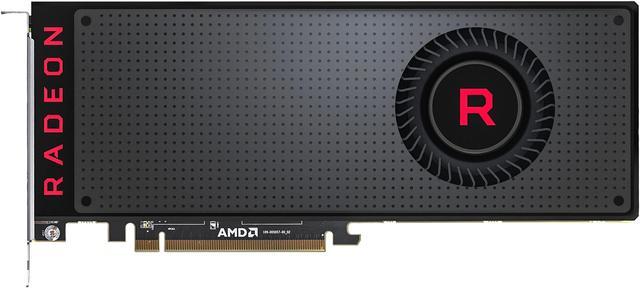
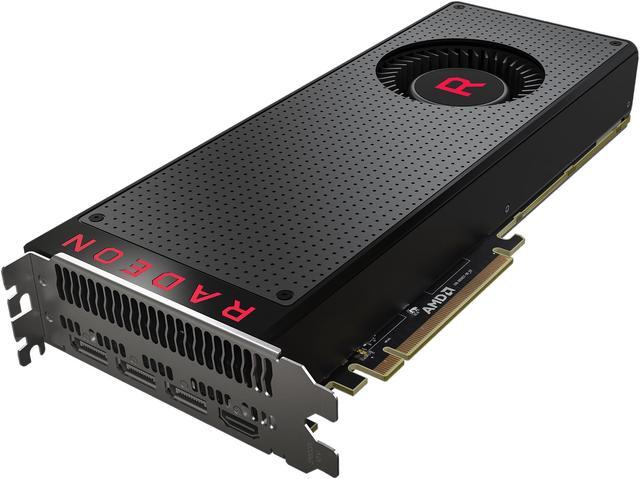
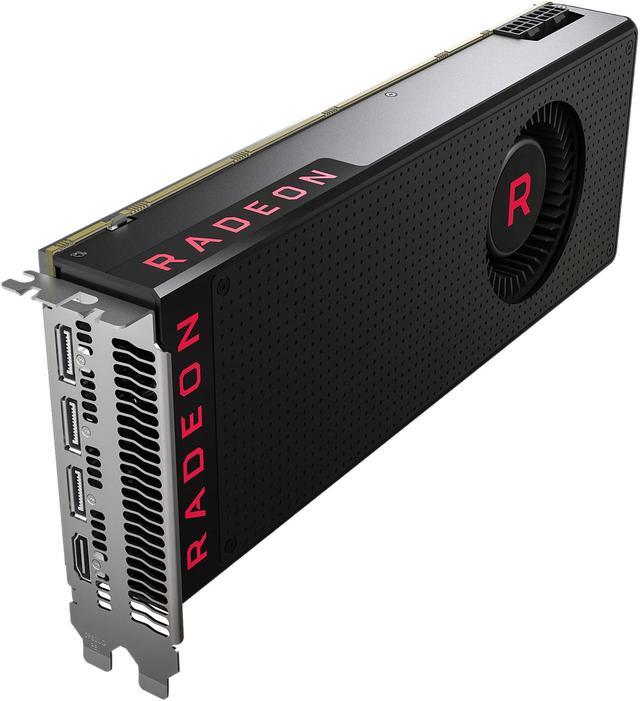
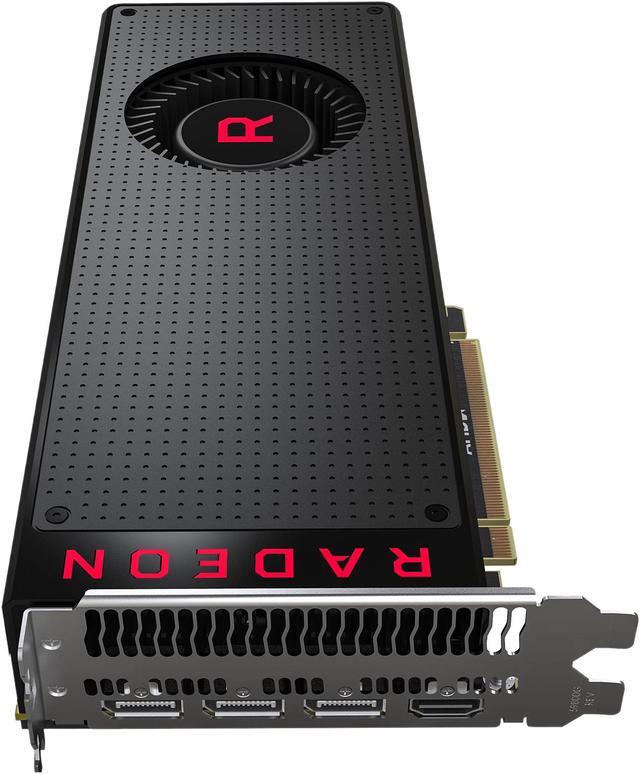

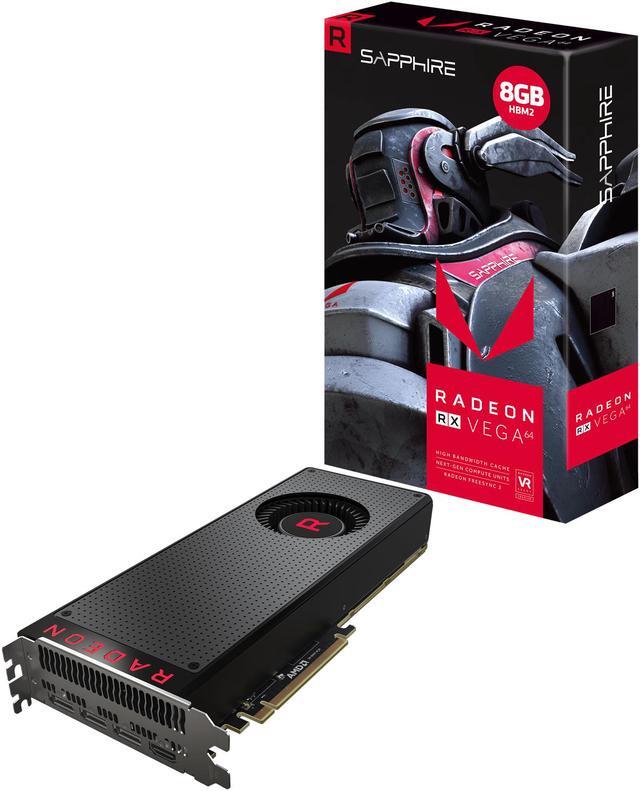
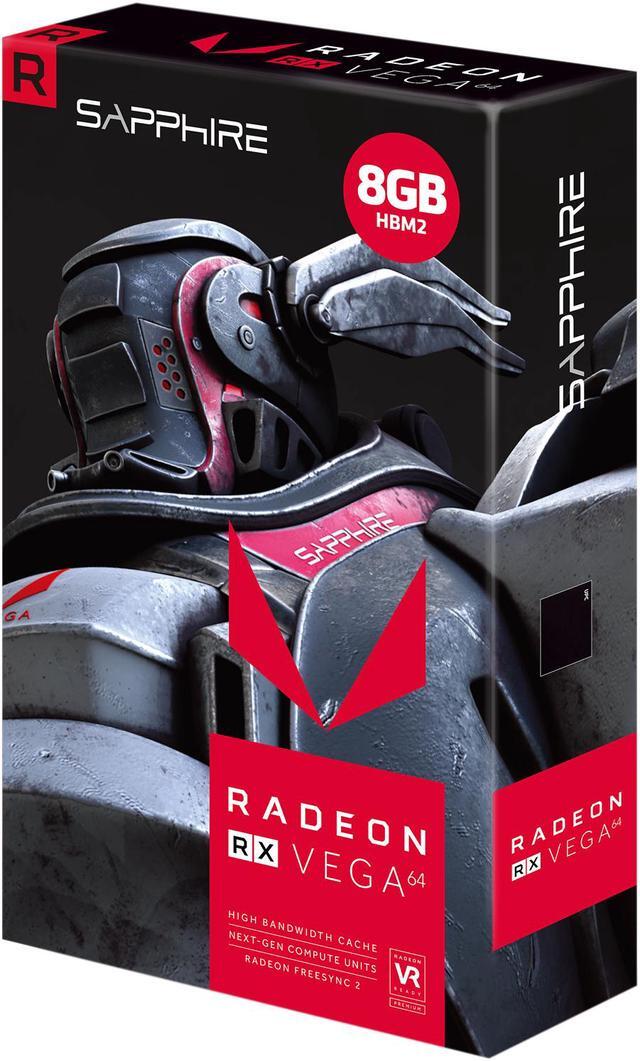
Make informed decisions with expert advice. Learn More
Any questions? Our AI beta will help you find out quickly.
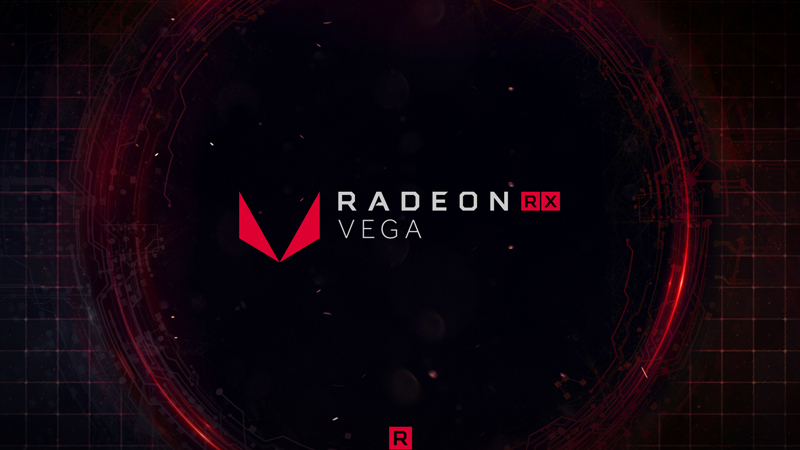
The Radeon RX Vega 64 is AMD's newest flagship gaming graphics card, which is designed with extremer gamers in mind. It is built with an extensively redesigned and forward-thinking GPU architecture to deliver exhilarating performance in the newest DirectX 12 and Vulkan games. Crank up your graphics quality and bring out every detail at incredible resolutions, power the latest displays and play in lifelike HDR. Step up to next generation of immersive gaming and lose yourself in the greatest high-end gaming and virtual reality experiences. Plus, you can also tream your gameplay for the world, and record your highlights all at the same time with virtually no performance loss.

DirectX 12
DirectX 12 is a new, “console-like” graphics API from Microsoft that empowers game developers with more direct and obvious control of PC hardware. This direct or “explicit” control better exposes the hardware resources of AMD Radeon GPUs to yield higher hardware throughput and, ultimately, more performance for users. To put it simply: much more efficient hardware through smarter software! At the discretion of a game developer, this superior efficiency can be spent on higher framerates, lower latency (VR), lower power consumption, better image quality, or some calculated balance of all four. In any scenario, gamers stand to benefit greatly from choosing AMD hardware to run their favorite DirectX 12 game.


AMD FreeSync Technology
No stuttering. No tearing. Just gaming.
AMD FreeSync technology allows a compatible graphics card and monitor to dynamically change frame rates for the optimum display quality without tearing or stuttering.
FreeSync uses industry-standard displayPort Adaptive-Sync, eliminating screen tearing without all the usual lag and latency.



AMD XConnect Technology
Plug in and game on with AMD XConnect technology.
Now it’s easier than ever to connect and use an external Radeon graphics card. With AMD XConnect technology, external GPU enclosures configured with Radeon Graphics can easily connect and disconnect to a compatible ultrathin notebook or 2-in 1 over Thunderbolt 3 at any time, just like a USB flash drive—a first for external GPUs!

AMD Eyefinity Technology
Multidisplay technology for gaming, productivity and entertainment
Go beyond the boundaries of traditional PC displays. AMD Eyefinity technology expands the traditional limits of desktop computing by multiplying your screen area. With multiple monitors, games become more immersive, workstations become more useful and you become more productive (an average of 42% more productive according to one study).
Take your PC games to the next level of reality and immersion. Most modern games look great on three screens, and only AMD Radeon graphics offer you the ability to play across five screens for an eye-popping gaming experience. Other combinations and configurations with up to six screens work too.1 Create your dream display.



AMD Crossfire
Harness the power of multiple GPUs
AMD CrossFire technology is the ultimate multi-GPU performance gaming platform. Unlocking game-dominating power, AMD CrossFire harnesses the power of two or more discrete graphics cards working in parallel to dramatically improve gaming performance.1 AMD CrossFire technology ready graphics cards fit practically every budget. With the flexibility to combine two, three or four GPUs, AMD CrossFire technology is the perfect solution for those who demand extreme performance.

Introducing AMD LiquidVR
LiquidVR is an AMD initiative dedicated to making VR as comfortable and realistic as possible by creating and maintaining what’s known as “presence” — a state of immersive awareness where situations, objects, or characters within the virtual world seem “real.” Guided by close collaboration with key technology partners in the ecosystem, LiquidVR uses AMD’s GPU software and hardware sub-systems to tackle the common issues and pitfalls of achieving presence, such as reducing motion-to-photon latency to less than 10 milliseconds. This is a crucial step in addressing the common discomforts, such as motion sickness, that may occur when you turn your head in a virtual world and it takes even a few milliseconds too long for a new perspective to be shown.



Virtual Super Resolution
Virtual Super Resolution (VSR) is an AMD feature that is game and engine agnostic to simulate Super-Sampling Anti-Aliasing (SSAA) in games that do not have native SSAA support. VSR can also be used in conjunction with other native in-game anti-aliasing for even more game graphics-setting control. VSR allows games to render at higher resolutions (up to 4K; see the ‘Virtual Super Resolution Support’ table, below) and then rescales them down to a lower native display resolution. Using this, you can get quality that rivals up to 4K, even on a 1080p display while playing your favorite games.